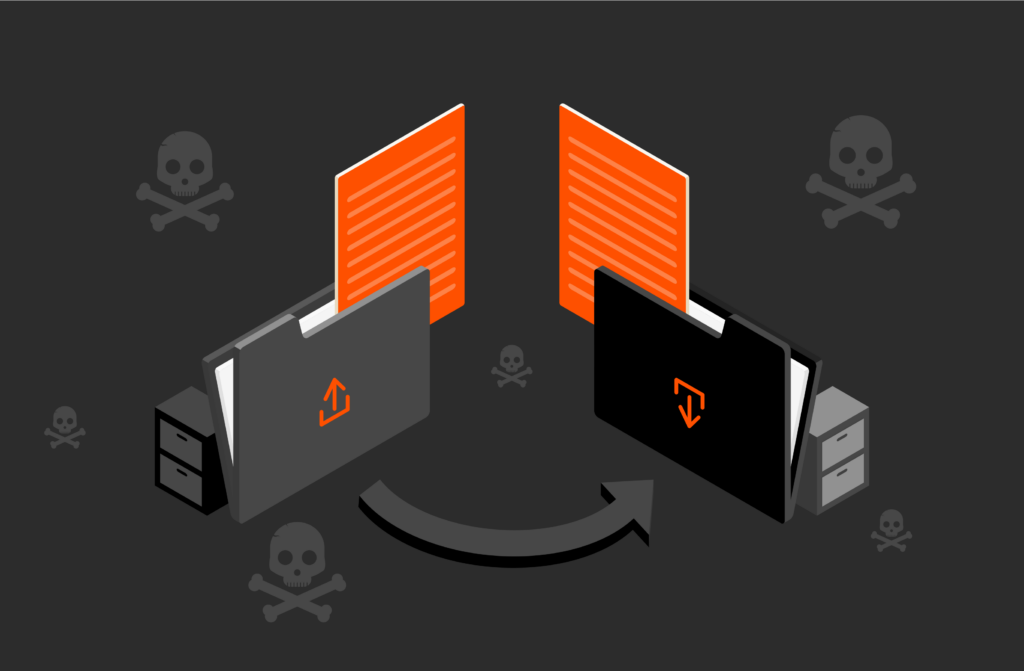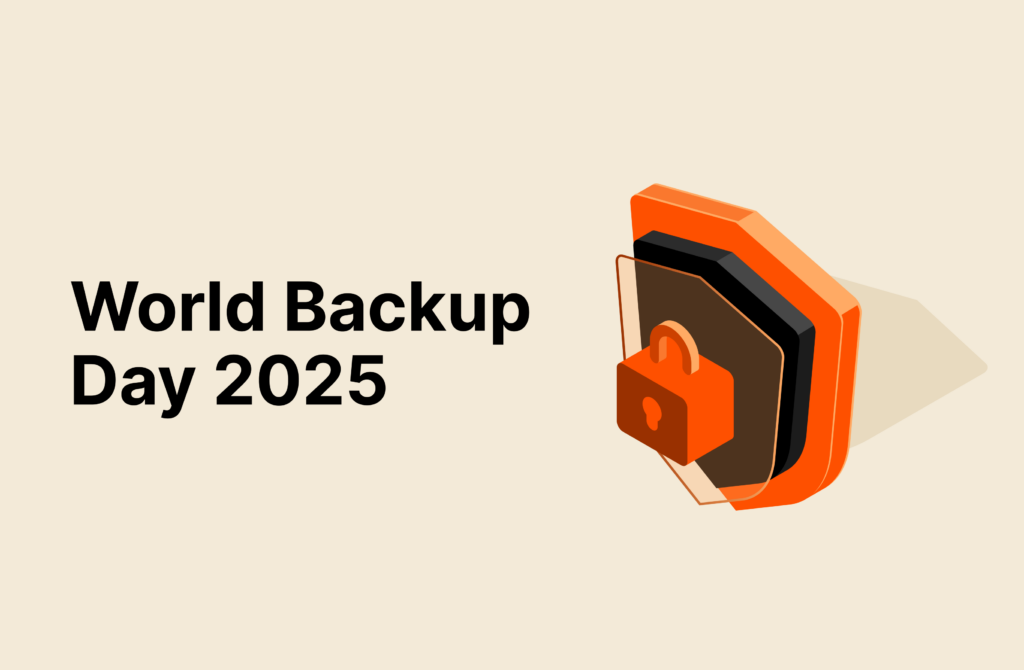Whether you’re miles into digital transformation (DX) or just revving up, you know data is key to nearly every acceleration effort you take on. From AI, machine learning, and neural networks to blockchain and supply-chain innovation to analytics and DevOps and everything-as-a-service, data is the asset to end all assets.
But data isn’t just another available tool you can plug into—or is it? Many companies are sitting on a stockpile of great data they’re not tapping into: backups. When backups are lightweight, packaged, and portable, these IT mainstays are more than just insurance policies providing peace of mind. They’re keys to unlock productivity, innovation, better security, and more.
If you’ve mostly thought of backups as a backup plan, it may be time to start thinking of these idle resources as an onward and upward plan—especially in terms of accelerating your modernization. And whether you’re using storage snapshot copies or “traditional” backup to disk, the right infrastructure makes a difference.
6 Ways to Drive Innovation and Productivity with Modern Data Backups
Engineered for speed, all-flash, cloud-integrated data copies can drive data reuse at scale. You can clone snapshots in minutes, on-premises or in the cloud, without needing a ton of extra space or resources, making data available to improve business agility. Backups are like multipurpose, built-in accelerants you can use in place—and here are a few ways how.
Mine Data Backups for Insights
“Regardless of what industry you’re in, analytics will again be one of the most dominant focal points of digital transformation in 2020.” –Daniel Newman, Forbes.com
The faster your analytics can move, the faster your decision-making will too.
Analytics will be where the major competitive advantage lies, and it’s one of the biggest trends in digital transformation in 2020. Modern analytics has huge potential to reduce risk, boost efficiency, and ensure continuity. But there’s often a conundrum: Trying to analyze modern data on legacy systems can make the wheels come off critical operations.
When you have new questions to ask of your data, being able to access backup data that’s simple and performant can give analytics efforts major agility. A unified data backup solution can provide quick access to a large amount of high-quality data so you can easily analyze massive data sets and derive insights without impacting production systems.
Accelerate Agility and Time to Market for New Features and Innovations
The quicker your developers can move, the faster your organization can offer new features and improvements. DevOps by nature moves fast and relies on virtual environments, often in containers, for iterative, test-driven development. But rigid software development life cycles and staging environments can have limitations. Snapshots remove these hurdles and help to further reduce the iterative loop.
Production-quality snapshots are sandboxes just waiting to be leveraged. You can create them in seconds with a fraction of the disk space compared to traditional test master databases, which can take as much time and space to create as the original. With Pure Storage® Pure Cloud Block Store™ snapshots, you can create clones in the cloud that consume no additional cloud storage.
Developers get a more accurate simulation of real-world, production demands—a virtually “live” environment, without the risk. Teams can use actual data instead of dummy data, and more than one developer can spin up his or her own independent environments, too. The result? Accelerated application development, on-premises and in the cloud.
Reduce Deployment Risks with More Accurate Testing, Training, and QA
Piggybacking on increased development agility, replicas of application data also help you accurately run tests to ensure performance and security. If you’re already backing up virtual machines (VMs) in production, you could be using those cloned environments for use cases that go beyond data protection like testing, training, security, and QA.
Faster, more thorough testing means fewer bugs and patches—which can pay back in spades.
“Tests need to be run in an environment that’s a best-effort simulation of the production environment. And in my opinion, the best-effort simulation of the production environment is…the production environment itself.” –Cindy Sridharan, Testing in Production, the Safe Way
From a QA standpoint, staging environments can pale in comparison to the test coverage backups can provide. Staging isn’t always sufficient as the only type of testing before an entire rollout, so when you want more depth and accuracy, a production environment snapshot or backup can get you closer.
You might also create isolated copies for simulated production environments where developers can train other developers on their code, troubleshoot issues, or run QA, patch, and security tests without impacting production. These can be self-service, easily shared among teams, and quickly provisioned and deprovisioned as needed.
Boost Productivity and Success for AI/ML Teams
AI and machine learning (ML) projects have different demands than traditional software projects. They require volumes of high-quality data to train and improve the models. But without access to highly mobile data sets, models can struggle to make it into production. It’s a common conundrum that puts a strain on both the data science and DevOps teams managing the data pipelines.
Snapshots can give data science teams unfettered access to high-quality, near-real-time data and dedicated training environments with actual data. This can make AI/ML initiatives a reality, another key DX theme for 2020 and beyond.
Improve Network and Application Security
It’s no surprise that more ambitious DX initiatives stall out when outdated, unreliable security technology gets in the way. When you consider how disparate data is these days—no longer just locked away on-site but spread across multicloud, hybrid cloud, and containers—the need for more modern protections is a natural first step.
Backups are a perfect opportunity to take a closer look at the fabric of your applications’ and network’s security. Scan them thoroughly for modern threats, dormant malware that hasn’t been detected yet, or securely share copies with professional vulnerability experts and pentesters who can run scans without any system downtime.
With that, you can more deftly avoid ransomware and embrace hybrid and multicloud services with confidence.
Fuel More Customer-centric Interactions
“When data is shared, it’s usually packaged at the convenience of the application developer, not the data user. [It’s] completely impractical in today’s world where IT manages dozens of systems that rely on data from multiple sources to support individual business processes.” –The 5 Essential Components of a Data Strategy
Another major theme of digital transformation: connecting with your customers in more meaningful ways to improve experience. Data is how companies generate empathetic relationships with customers. That applied intelligence improves advertising and marketing technologies that drive customer engagement. It can be difficult to make that data available downstream to other applications when it’s packaged strictly for backup scenarios.
Mobile, immutable snapshots can help organizations unleash the data they’ve gathered and stored in backup systems and utilize it in marketing automation platforms, reporting tools, and more. These increased capabilities are key to shifting from neutral to next-gen innovation and beyond.
Modern Data Backups vs. Legacy Backups—There’s a Difference
Backups have always been critical to business. But looking at legacy backup infrastructure and its limitations, it’s easy to see why they haven’t always been cohorts in high-velocity strategies.
“Creating more value from your backup infrastructure requires organizations to rethink not only how they currently backup and recover data, but also how they need to make data available for workloads other than backup and recovery.” –Mass Data Fragmentation Is Quietly Killing Digital Transformation
It boils down to how they’re stored. Legacy backups are locked in silos and complex disk-to-tape backup architectures that struggle to keep up. Sometimes, backup appliances flat-out break down under the stress—especially when using backup data at scale. And the sheer space and resources legacy backups require make them clunky at best.
Modern data backup storage has to address these old issues head-on. That means delivering:
- Visibility into data to reduce blind spots:Backup data shouldn’t be a black hole—it should be a gold mine.
- Collection and protection:If you store your backups like an insurance policy, that’s as far as they’ll go. Backups need to be accessible, without compromising productivity.
- Integration into your broader data and IT infrastructure:Allow backups to be reused and shared downstream for other applications and scenarios rather than just disaster recovery.
- Backups that many teams can leverage and derive value from: Package them like burdens or by-products and that will be the extent of their value. Make them consumable and they can become valuable to others in your organization besides developers and IT managers.
- A unified storage solution to reduce fragmentation, copy sprawl, and budget waste on redundant copies:ESG reports that CIOs worry about the amount of data copies currently being managed in their organizations and the cost it incurs. On average, organizations store six copies of the same data.
Rethink Data Reuse
Backup modernization has come a long way. Today, modern all-flash storage and snapshots are giving backups more agility. Faster restores can take data reuse scenarios out of neutral so you can leverage these self-contained copies for other capacities.
Many miss the fact that, just like legacy IT solutions, out-of-date storage solutions will make it hard to ask more from data. Investing in better data backup storage is an investment in digital transformation. So put it into fifth gear and hit it.

Cyber Resilience, Pure and Simple
Fortify your data and guarantee uninterrupted business operations.
Modernize Backups
Get your data out of neutral






